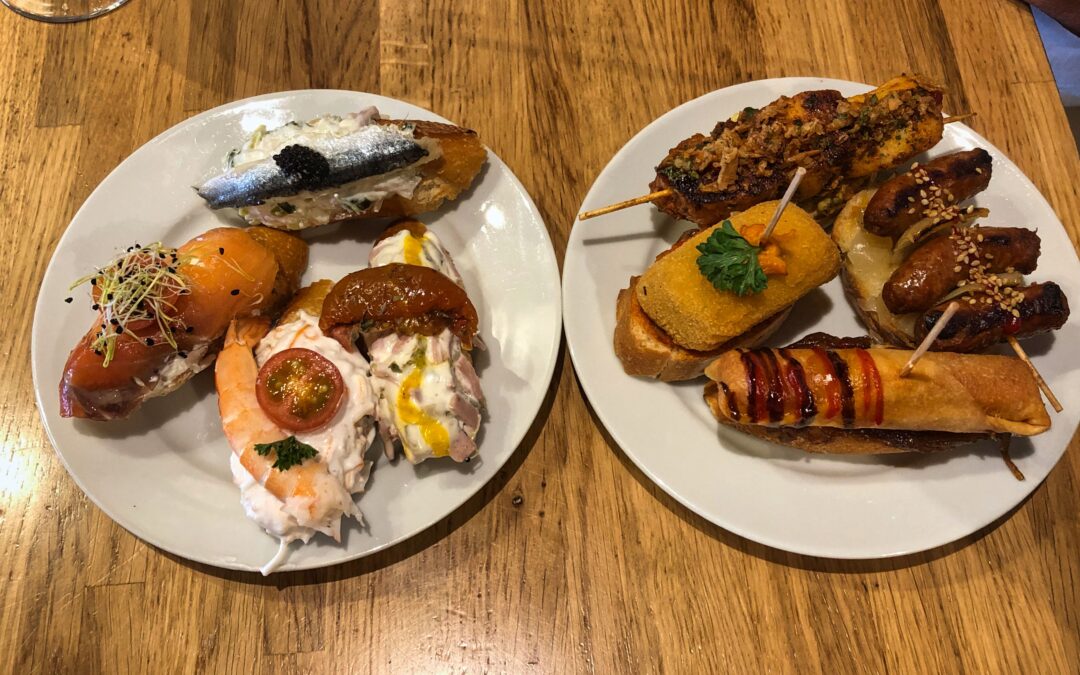 We were really looking forward to seeing the Basque Country. Renowned for its natural beauty and good food, this part of Spain did not disappoint. We based ourselves close to the beach in the Getxo suburb of Bilboa and explored from there.
We were really looking forward to seeing the Basque Country. Renowned for its natural beauty and good food, this part of Spain did not disappoint. We based ourselves close to the beach in the Getxo suburb of Bilboa and explored from there.
Going to the beach gave us a nice break from daily sight-seeing as one thing we were reminded of early on this journey is that sensory overload is a reality! Alternating day-trips with trips to the beach gives your mind time to absorb and interpret all the input it has been exposed to! Fortunately, the long summer days make it possible to explore late into the evenings.
We also visited San Sebastian,
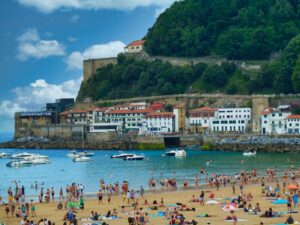
the charming little coastal town 20km from the French border. It’s best known for Playa (beach) de la Concha and Playa de Ondarreta, alongside which sits an elegant seaside promenade with some world-renowned restaurants.
Here in Donostia, as the town is also known, we sampled the excellent Basque beef at a little place called Bar Nestor that only has seven tables in total but gets great reviews on Trip Advisor and Google. Their “Chuleton” or rib-eye steak is delicious!
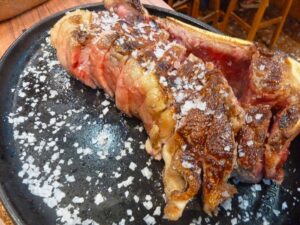
A quick note on beef prices in Spain.
As South Africans we’re used to buying excellent beef at great prices.
In Madrid we’ve basically eliminated beef from our shopping trolley as the prices are usually too expensive (double or even treble the SA price per kg) unless it’s on special.
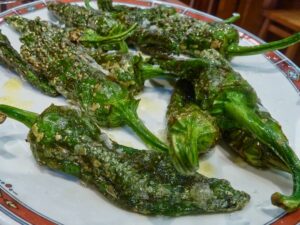
BIlbao
One of the most w ell known attractions in Bilbao is the Guggenheim Museum.
ell known attractions in Bilbao is the Guggenheim Museum.
The building, strategically placed next to the River Nervión that runs through the city, is as big an attraction as the art collections inside.
Most definitely worth a visit! We spent hours here and took many photos! 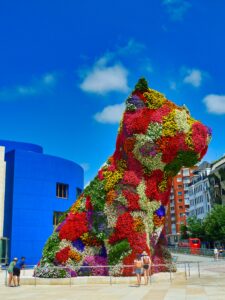
The bridges of Bilbao are impressive and its worth just taking a stroll along the Nervión to enjoy the sighs.
The old historic centre or Casco Viejo has lots to see, including an imposing cathedral dating mainly for the 15th century and the Ribera Market, built in 1929 in the Art Deco style and listed in 1990 as the most complete municipal food market by the Guinness Book of Records.
We were particularly impressed by the monumental Plaza Nueva, a Neoclassical sq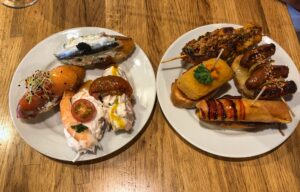 uare built in 1821 that is enclosed by arcaded buildings and accessed by arches known as cuevas (caves). We stopped here for some delicious tapas (and a litre of Sangria!) at a bar called Zezen Gorri.
uare built in 1821 that is enclosed by arcaded buildings and accessed by arches known as cuevas (caves). We stopped here for some delicious tapas (and a litre of Sangria!) at a bar called Zezen Gorri.
Ge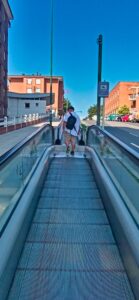 tting about Bilbao by metro was fast and easy. This was the first time we’d seen an exterior escalator that takes commuters in Getxo up the town’s steep hill to its local metro station.
tting about Bilbao by metro was fast and easy. This was the first time we’d seen an exterior escalator that takes commuters in Getxo up the town’s steep hill to its local metro station.
Guernica
One of the first things we did on arriving in Madrid was to visit the Museo Reina Sofía to see its priceless artworks but, in particular, Pablo Picasso’s painting “Guernica”. So, visiting Guernica wasn’t as much a sight-seeing visit as a “pilgrimage” to a site of carnage. The small town is known for one of the first aerial bombings by Nazi Germany’s Luftwaffe Condor Legion in 1937 during the Spanish civil war. The bombings took place on a Monday market day in the small town, destroying most of the buildings and killing hundreds of people.

By sheer coincidence we visited the town on a Monday – and explored the market that is still going strong today! A tiled replica of Picasso’s painting, a few hundred meters away from the market, is worth a visit.
